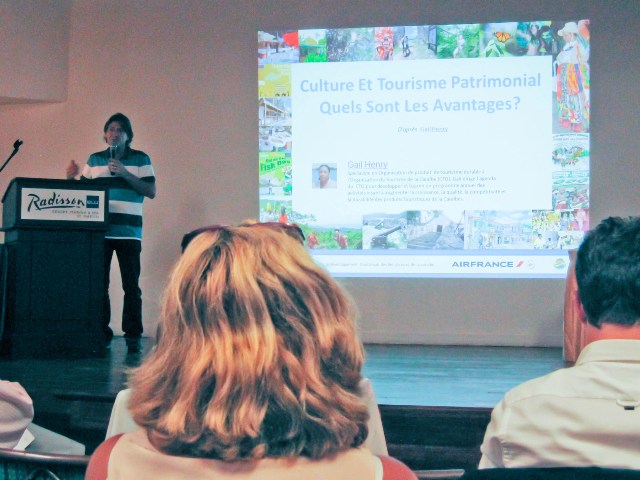
A diverse group of people came together around a conference room table at the Radisson Hotel in Anse Marcel, to spend the day planning how to develop St. Martin’s cultural and natural heritage assets to attract a portion of the growing experiential tourism market.
Experiential tourism, one term for the growing market of tourists seeking authentic experiences centered around nature, culture, arts and heritage, is a fast growing segment of the global tourism market, and typically includes visitors that stay longer and spend more than traditional tourists. The workshop, moderated by Christophe Henocq, aimed to outline a strategy and action plan to guide future efforts in these areas as a way to increase tourism on the island, particularly during low season.
Part of a two-day tourism conference organized by Député Daniel Gibbs in partnership with Air France and the Caribbean Tourism Organization (CTO), the heritage and environment "think tank" session attracted a mix of business owners and representatives of associations working in ecology, history, culture and the arts to share ideas for development in these areas and seek cooperative solutions to make them a reality.
"For those of us who have been working to develop natural and cultural assets for years or decades, this is a very exciting time due to the rapid growth of heritage tourism worldwide," explained roundtable facilitator Christophe Henocq. "The tremendous economic potential of the island’s heritage has created mainstream interest in promoting and protecting the things that make St. Martin unique."
Two hours of roundtable discussion in the morning focused on identifying existing assets on the island, exploring new opportunities and addressing obstacles to developing heritage tourism. Assets identified in the discussion were plentiful and diverse, including protected wetlands of international importance, historical sites like Fort Louis, attractions such as Loterie Farm and public events like Mardis de Grand Case. Cuisine, traditional architecture and local arts were also pinpointed as key elements of the authentic St. Martin experience.
A rich variety of future opportunities were also explored. The team considered attractions and events that combine multiple aspects of heritage to be especially promising, due to their potential to attract a broader audience. A wildlife trail on the Grand Case salt pond that also tells the story of the salt industry was one suggestion. In keeping with the theme of the conference, the group also investigated specific ways to attract tourism during the low season, such as increasing the international appeal of off-season events such as the St. Martin Book Fair and Migratory Bird Festival and creating new magnet events such as art/history/film fusion exhibitions and hiking festivals.
Regrouping after lunch, the workshop created an action plan based on the discussion from the morning, and presented it to the general conference and the press. Key objectives included expanding and improving the island’s heritage offerings to increase their appeal and reach new niche markets, creating a committee to develop heritage tourism on the island, and developing a unified brand and message around St. Martin’s heritage offerings that it can promote in key international markets.
Significant challenges remain. Difficulty finding information about heritage attractions, the need for improved logistics and parking for events, and security issues were identified as obstacles facing tourists on the island today. However, with a lucrative and growing market to address, a plan of action, and broad interest in developing these assets, the future of heritage-based tourism on St. Martin looks brighter than ever.

